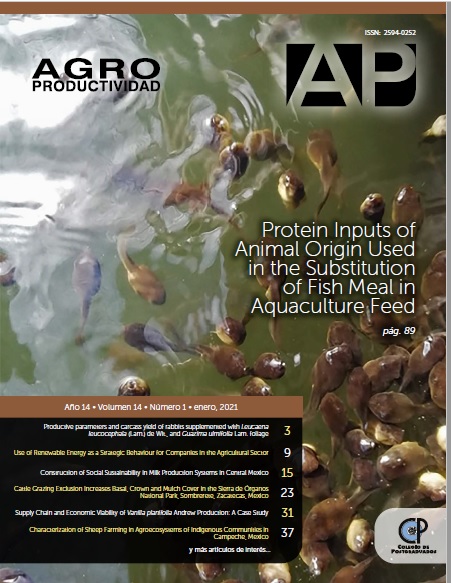Supply chain characterization and economic viability of Planifolia Andrew vanilla production: a case of study
Main Article Content
Keywords
Supply chain, IRR, Vanilla
Abstract
Objective: Characterize the supply chain of Planifolia Andrew vanilla in order to detect improvement areas and also determine the economic viability for its production.
Design/methodology/approach: Information about supply chain was collected through semi-structured interviews into a vanilla company. The Value Stream Mapping technique was used to characterize the supply chain. Additional databases were consulted in order to get information about vanilla production and commercialization. The economic viability of vanilla production was analyzed by IRR.
Results: The case of study has 5 stages in its supply chain. The cash flows IRR of the traditional and technified production systems were positive, although the IRR of the traditional system was higher despite to have a lower production volume.
Limitations on study/implications: We observed that vanilla requires between 3 and 4 years for its first harvest, regardless the production system, this implies that despite the IRR of both systems are positive there are negative cash flows in the first two years.
Findings/conclusions: The critical stage in the supply chain in the studied company was production. Cash flows of the technified system were higher than the traditional system. However, the IRR of the technified system is lower, due to the investment in shadow mesh is not offset by the discounted cash flows that could be obtained.

